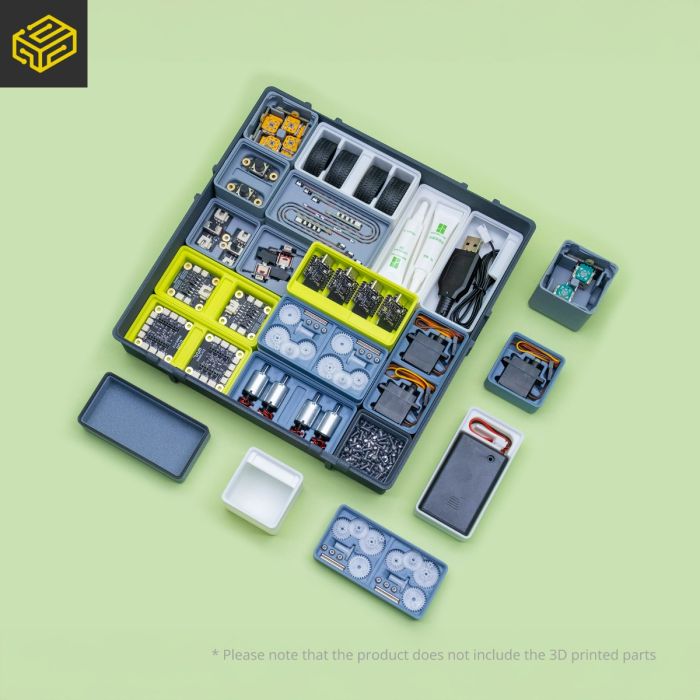1. What kind of functions are supported?
The Core Controller in this release is powered by the ESP32-C3 microcontroller, running a custom MicroPython library with unique functions. Any functionality supported by the ESP32-C3’s performance and interfaces can theoretically be implemented. For the initial models, we recommend using them for remote-controlled toy models. Key features like multi-channel proportional control, channel binding, mixing, and simple event control can be easily configured through the app’s graphical interface. Users can also directly use pre-configured files from creators without needing to modify settings. For advanced users, more complex requirements can be achieved using MicroPython, and we will provide relevant documentation.
2. What Dev Tools are compatible with CyberBrick?
You can use any IDE that supports MicroPython and serial communication. For lightweight IDEs, we recommend Thonny. For a more feature-rich experience, Visual Studio Code (VS Code) is a great choice.
3. What technical support is available for using the hardware sold in CyberBrick?
We will provide hardware module specifications (e.g., voltage, current, ADC channels), CAD files for mechanical design, and API documentation for programming (including explanations for all custom functions beyond the standard MicroPython library).
4. How does CyberBrick compare to hobby-grade R/C and toys?
CyberBrick is positioned between hobby-grade RC models and standard remote-controlled toys. Our strength lies not in extreme performance or low cost but in limitless diversity. If you own a 3D printer, CyberBrick hardware allows you to explore a wide range of models at an affordable material cost, customize them to your liking, and enjoy a lower learning curve compared to professional RC models.
5. How does CyberBrick compare to Arduino or other Dev boards?
We hold Arduino and ESP32 in the highest regard and believe they are excellent learning tools. However, we are confident that a fun and engaging application provides the best motivation for learning, while also offering rich functionality for those who simply want an enjoyable toy. One of CyberBrick’s advantages over Arduino is that 3D-printed "shells" transform it from a teaching tool with a makeshift body into a proper toy. Additionally, smaller boards in the Arduino family, such as the Nano or Micro, often require soldering to connect external modules, which increases the difficulty of creation and makes repurposing across multiple projects less convenient. Simplifying complexity has always been our mission and strength, and this time is no exception. MicroPython, being simpler than C++ while retaining nearly full functionality, is our chosen path. We aim to provide challenges suitable for users of all skill levels. Stay tuned for more technical documentation at the official release!
Notice: For security and stability, the CyberBrick Multi-Function Core Board only supports firmware updates through official tools. Flashing with third-party tools is not supported and may cause irreversible damage, which is not covered by warranty. Please use only official tools for any firmware operations. Thank you for your understanding!




